Goats and Goths
By Deneb Sumbul | Published 6 years ago
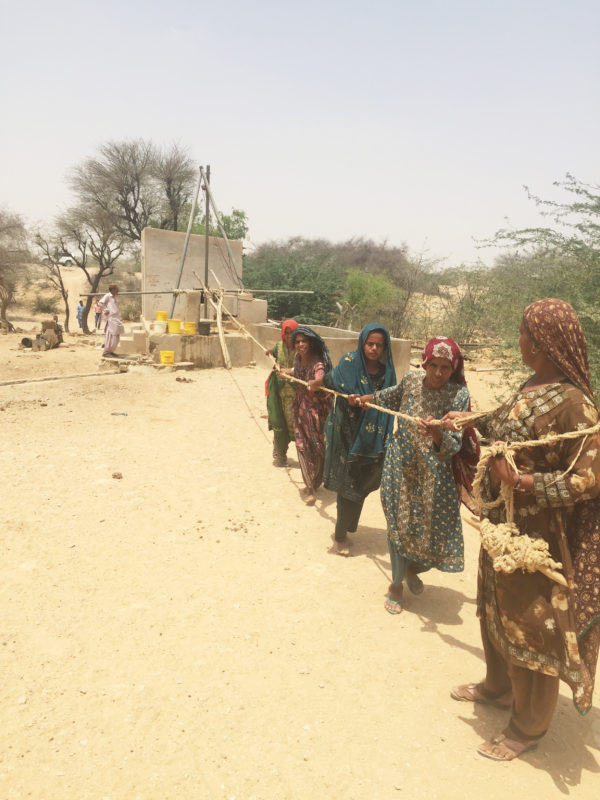
Successful energy consultant with an international career, Fariel Salahuddin evolved into a social entrepreneur due to an unanticipated turn of events in her life. And from that twist of fate, emerged a project that would change not just her life, but the lives of many. Goats for Water (GFW) was born from an idea that started brewing in Fariel’s mind to devise a way to improve the lives of impoverished villagers in remote areas. What transpired, says Fariel, was a gift from God or the Universe. As her unplanned project came to life, she maintains, it gave her more than she had ever thought possible.
Before the change in her career path, Fariel maintains, she felt her perspective in life had been blinkered. She grew up, she says, with a particular image of what life for her should be like: the kind of education, job title, the company and the amount of salary she ought to have. And she did it all with a fair amount of success, making a name for herself in the industry that she was working in.
Engaged with mega projects in the power sector at the policy level with the government of Pakistan and donors Fariel was also involved in energy policy projects in Egypt and Indonesia. However, these were all top-down ventures, which meant that people would get access to electricity, or that load-shedding would end only if certain problems were addressed first. After toiling for four years, she saw no positive results. That led to the idea of starting work on the issue from the bottom-up i.e. working directly with people without access to any kind of energy whatsoever.
Returning to Karachi from Egypt, after a long absence, Fariel found the time to explore her idea further. She visited a number of off-grid villages in Sindh, and started to research solar mini-grids, which are small, solar powered systems that can provide power of up to five kilowatts to small communities. She accurately anticipated the big leap forward even this level of electricity would achieve for low-income villages and hamlets that did not even have basic amenities such as water, and no means to access either.
Resuming her consultancy work in Karachi, Fariel simultaneously started to build upon her idea, focusing on off-grid villages that were drawing water from wells with diesel pumps. This was expensive business: as a community they were paying an average of $400 (Rs 44,000) per month for the fuel. That meant that each household, earning an average of Rs 7,000 per month, was paying a sizeable amount of that money just for accessing water — and that too not every day. It became clear to Fariel what needed to change.
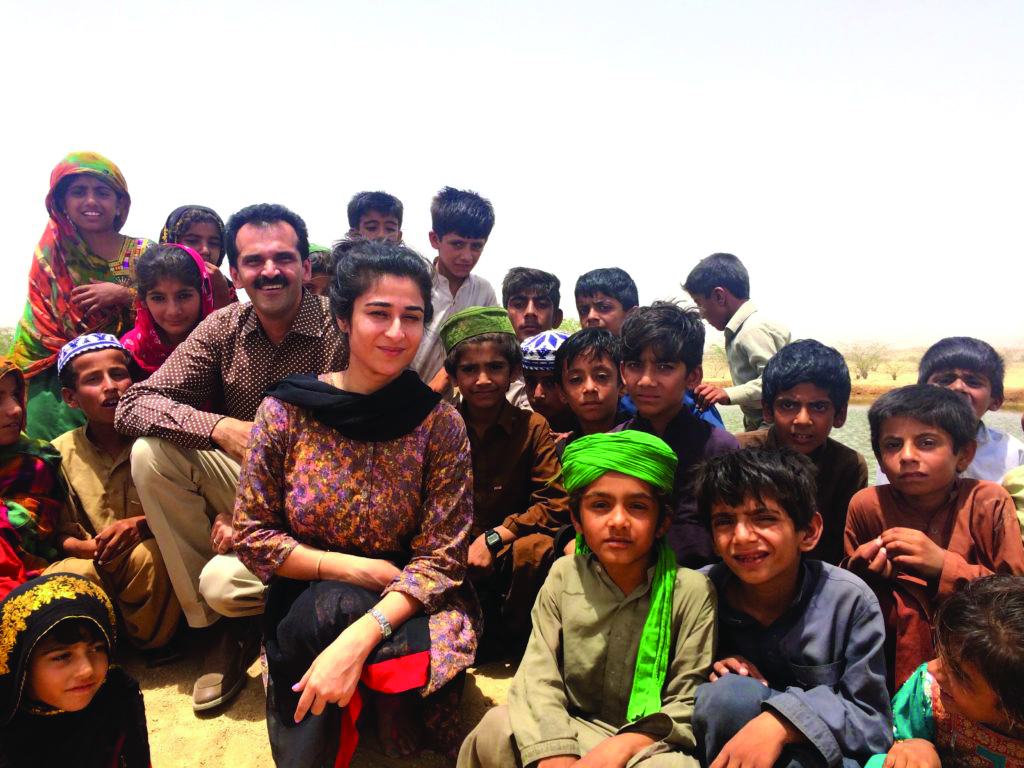
The question arose of sustainability, as Fariel realised she could only finance the installation of two to three solar pump. She explored different models in use in other countries. One in particular, was the traditional model of Pay-As-You-Go for water — an automated water pumps like vending machine that, in lieu of cash, dispenses water and can be installed in localities which do not have access to drinking water. However, this technology requires SIMs to receive cell phone signals which are not readily available in all areas. The other drawback is that the device that is used, based on GSM technology gives the control to the installer to make it commercially viable, and can be switched off at will — something Fariel was not comfortable with. So she rejected these options.
In the course of her research, Fariel observed that every house she visited in Sindh, had livestock; in fact, it was the predominant feature in every village she visited. She had noted the same phenomenon in rural households in Nepal when she started researching her idea. “Every household in Nepal had a number of goats which they used as ATMs to get cash for what they required. They would sell a couple of goats as needed, and continue to breed the rest to increase their stock. This is a global phenomenon in villages where they keep livestock,” explained Fariel. She decided to opt for, and adapt, this formula for water provision. However, instead of installing a mini-solar grid to power the water pumps in the villages for free, Fariel decided to take the payment in goats instead of cash, otherwise it would not be sustainable.
Fariel had the first solar water pump installed in Pathan Goth, a village in Jamshoro in 2016, in exchange for an IOU from the village in the form of a certain number of goats. Thereafter she left for Indonesia for a consulting assignment and got busy with that. But one week before Bakra Eid, Fariel says, she recalled she had goats which she could sell. She posted a brief description on Facebook of her livestock that she received as payment for setting up a solar-powered system for drawing water in a remote, impoverished village.
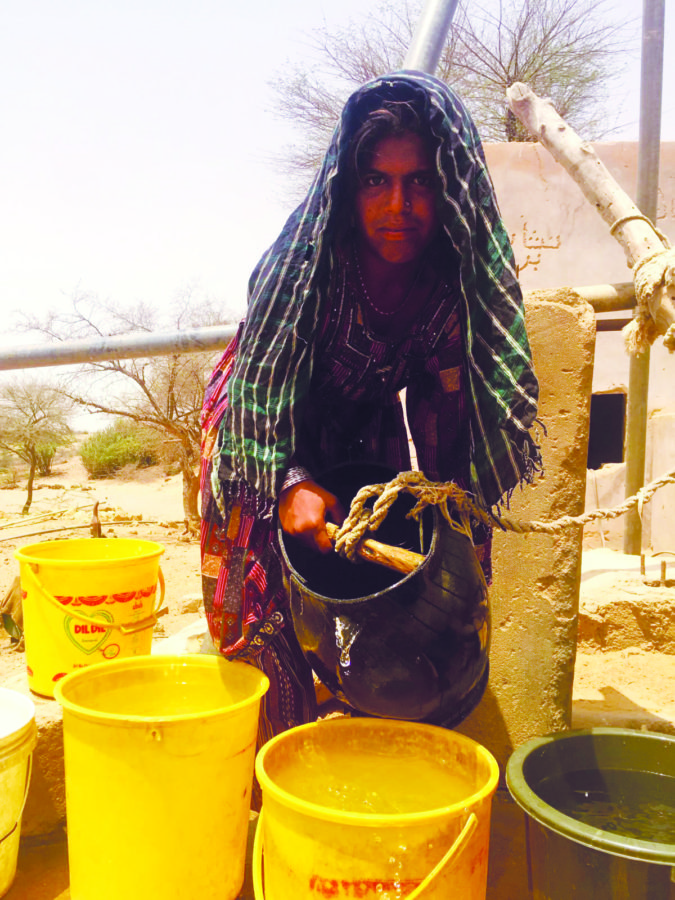
Life before Goats for Water
In addition, Fariel offered qurbani services for people abroad looking to offer their Eid sacrifices back home, giving them the option of either having their sacrifices done in the village she was working in at the time, or gifting one more goat to the poorest families in the community who were without any livestock to build their asset base. That Facebook post went viral, and within a week, between 14-20 of her goats sold at a price that covered the entire cost of the solar water pump for the village. Fariel then began to develop her model further on her return to Karachi.
The price of a pump varies according to the water level. For example, the water table in Jamshoro is extremely low, so in that case, the depth of the well would have to be as low as 100 to 150 feet, and the diameter of the water discharged for drinking by the pump, would need to be between 2 to 2.5 inches. A good quality pump and the best solar panels would, in this case, cost up to Rs 1.2 million. In Thar, where the depth of the water table is between 60 to 80 feet, the cost would come down to about Rs. 800,000 for a good solar-powered system that offers guarantees and superior quality panels.
Since starting this venture, Fariel and the team she assembled continue to fine-tune the GFW model. As matters stand, they have to wait for at least a year to accumulate enough goats from families who cannot muster them in one go, to cover the cost of the solar panel equipment at prevailing prices.
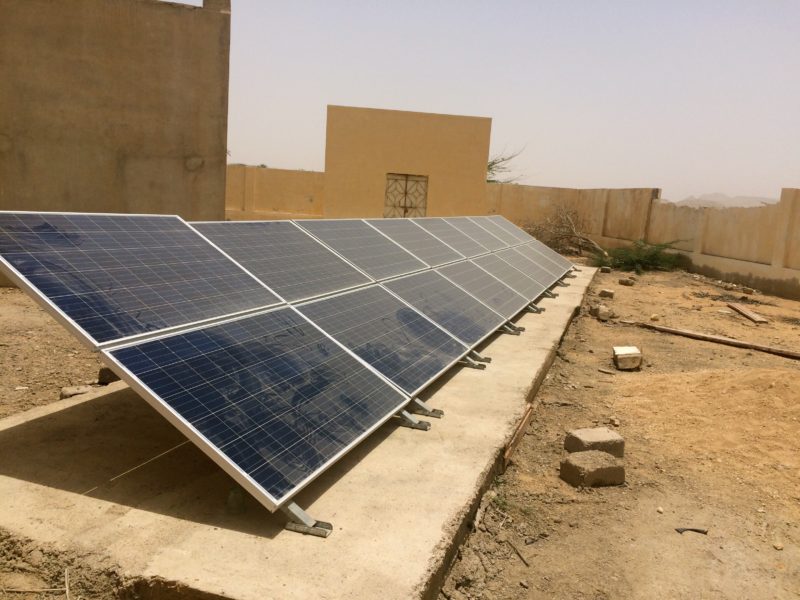
During her visits to rural communities, Fariel identifies villages where water pumps would be beneficial. She then holds a meeting with 20-30 men of the village where she convinces them of the GFW model. She explains to them that a solar water pump’s one-time cost is akin to the amount they spend on diesel fuel in a year. But they are led to understand, once purchased, it would eliminate the ever-rising cost they incur for diesel — currently an ongoing expense.
The success of the model can be gauged by the fact that the communities where Fariel has installed the solar water pumps, have now approached her for solar home systems with the same payment model. So GFW has come up with a new option called ‘Pay as you Goat.’ In the new scheme, a village household pays one or two goats every six months, depending on the solar home system that they purchase, and GFW sells the livestock onwards in the city, where the price is higher because of a big demand from abattoirs and other buyers.
After GFW successfully installed solar water pumps in five villages, major companies approached them to apply the same model in rural areas where they have a presence in terms of manufacturing plants, and where they wanted to help benefit local communities. Until recently, GFW would use hired transportation to travel to remote areas, and try to cover as many villages as possible in each trip. Now Corporate Social Responsibility (CSR) funds and the transport infrastructure of major corporations will go a long way in helping pinpoint other water-deprived villages, which the GFW project could not reach earlier because they did not have the necessary vehicles to access such villages, and evaluate their needs.
“We were approached by a number of corporate companies who have been putting up water pumps for free in these rural areas, but they wanted to move away from the 100 per cent charity model they had provided until then, because they found that the recipient communities were not taking care of these assets, and further, that a sense of entitlement had built up among the villagers, with unrealistic expectations of what they felt was their due,” says Fariel. “GoatsForWater is all about self-reliability, which we are facilitating through our model. These communities are not asset-poor; they are cash-poor because they are not merged with the cash-based mainstream economy. We are just the conduit that allows livestock to be used as money,” she explains.
The potential GFW has, is evidenced by a new development. Thardeep Rural Development Programme (TRDP), a not-for-profit organisation, recently approached GFW to implement this model in the 4,000 villages they have access to. Through CSR funding, GFW proceeded to begin by installing solar water pumps in two villages with TRDP. Working with all these channels will help scale up the GFW model at an accelerated pace.
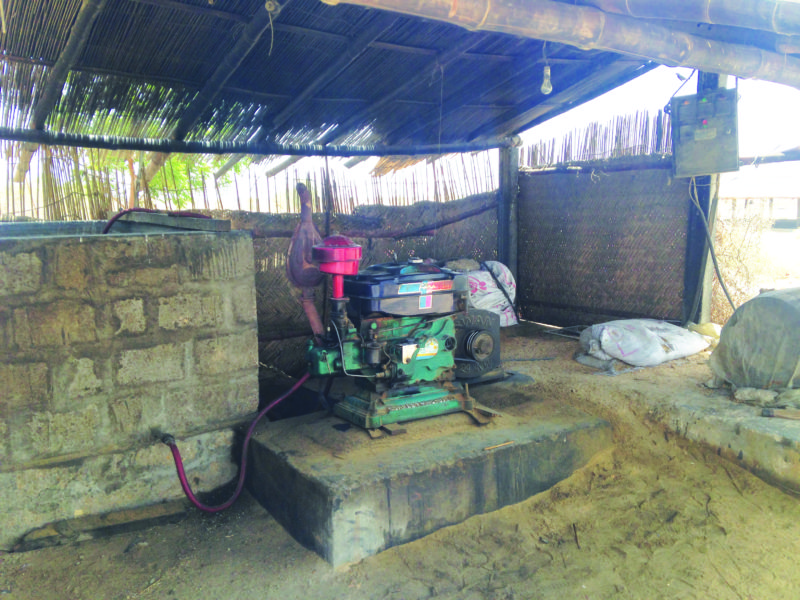
There have also been other developments. Previously, GFW would leave the goats the villagers had bartered for their pump in the village, and hire someone from the community to care for this livestock. However, it was a challenge to monitor the quality of the animals. Now GFW has resolved the problem by building a farm where goats can be kept.
“Another thing we are working on is providing these rural farmers access to markets so that they are able to get a higher price for their livestock than they do in the current market mechanism, which are local mandis (markets). Two or three middlemen take away at least 40 per cent of the value, if not more. There is also a big gap at the consumer end, where buyers are looking for quality animals because when the livestock hits the mandi, that’s when the issues begin — animals get injured, they are injected with various substances, including water, to increase their weight, etc. We want the farmers to raise quality animals for the buyers,” maintains Fariel.
“With the help of our tech partners; DPL (which is one of the largest software companies) we are developing a technology-based solution to enable farmers to sell to the abattoirs with more ease. For more transparency, the animals will be vetted so that buyers are assured they are purchasing healthy, quality animals from this platform.”
The visible impact of installing solar water pumps in off-grid remote villages have been manifold. Fariel noted that primarily, it has been on the health, hygiene and livelihood of the habitants. Previously, simple things like washing clothes had been a rarity. A village woman told Fariel that due to water paucity, the villagers would wash their clothes barely once a month. The amount of water drawn from the diesel pumps was limited, because it was so costly. In a documentary made on GFW, a villager discloses that before they had the pump, water for them was more expensive than food. When children would cry for water, said the woman, they would be given milk, and would only be given water if their crying persisted.
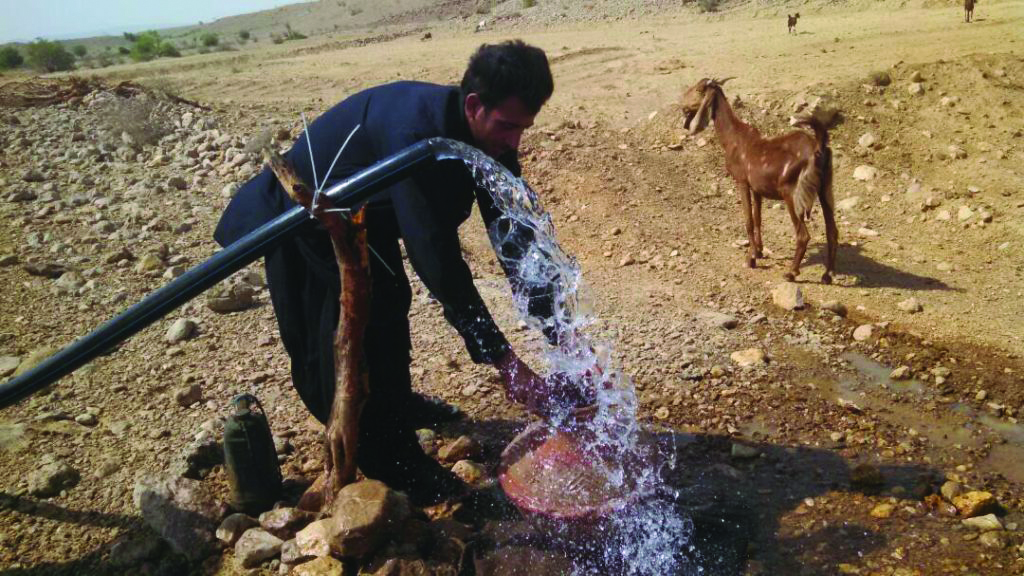
A solar powered pump
The days they couldn’t draw enough water, the mothers would take their daughters to the nearest waterhole, four hours away, to carry back barely a bucketful of water each. Since water-carrying in these villages is solely a female activity, the girls would have to miss school.
Because of the added water, these villages are now able to grow more fodder for their livestock as well as provide them clean water. Consequently, their livestock is of a better quality, with more weight, which in turn renders the animals more valuable leading to higher household incomes.
Previously, in addition to working on GFW, Fariel was engaged in full-time work with assorted consultancies. But since her venture picked up momentum over the last two years, she has moved into it full time. Presently, with a team of four, she is focused on building GFW as a venture “that follows the definition of a social enterprise — business acumen combined with empathy. We try not to lose our empathy and our mission, which is to bring ease to the lives of the rural community, while making the project sustainable.”
During the very early stages of GFW, when it was not an entity, nor an organisation — just an idea she was working on alone — Fariel had been invited to be part of SPRING accelerator based in the UK. In the first meeting with one of the business leaders, who was there to fine-tune her model, his praise for the initiative made Fariel realise she had come up with something significant, which she was now responsible for taking forward. It was not something that would benefit only a couple of villages. In 2018, the GFW plans to install 200 solar water pumps in remote off-grid villages across Sindh. They have also been invited to Somalia, a country similar to Pakistan in terms of weather and livestock, to partner, share and scale up their model over there.
The writer is working with the Newsline as Assistant Editor, she is a documentary filmmaker and activist.


